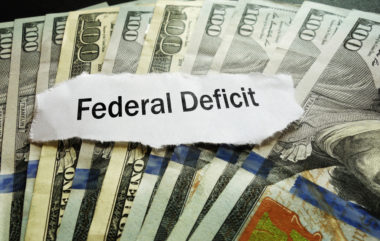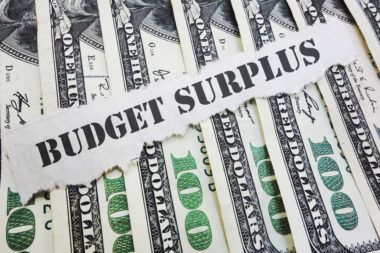Simply put, APR is what a lender charges you to borrow money. It’s the price you pay to take out a loan. Though this may sound similar to an interest rate, APR differs in a few key ways. When comparing credit cards or shopping for a loan, you should factor both the interest rate and the APR into your decision. In fact, you should know what APR is, the different types of APR, and how to calculate it — and you should know all of this before you take out a loan or commit to a credit card.
Table of Contents
What Does APR Mean?
The Consumer Financial Protection Bureau defines APR as the interest rate of a credit card expressed as a yearly rate. The interest rate and APR are often similar, if not the same, for many credit cards. You can even avoid paying interest on purchases made with a credit card entirely if you pay it off in full each month.
Things get a little more complicated when looking at the APR in the context of loans. For example, if you take out a $10,000 auto loan and are charged an APR of five percent for two years, you’ll end up paying your lender about $11,000. While you have to repay the $10,000 for the loan itself, you were also charged an additional $1,000 simply to take out the loan. Banks and lenders do this as a way to make money through lending.
What Does APR Stand For?
APR stands for “annual percentage rate.” This is the yearly cost of a loan expressed as a percentage. Unlike interest, any additional loan fees — such as an origination, late, or processing fee — are taken into account when calculating APR.
How Does APR Work?
APR is usually something you’ll have to agree to take out a loan or sign up for a credit card. Depending on the type of loan or credit card you’re applying for, the APR can vary. Generally, a lower APR is better for you, as you’ll have to pay less for your loan. Getting a loan with a high APR can overwhelm your budget, but you should also be careful to only take on debt that you need or can manage if you can secure a lower APR.
Types of APR
Knowing the APR you have to pay, as well as the type of APR, is crucial to understanding how this debt will affect your finances. There are five main types of APR that a lender can charge:
- Purchase APR: The purchase APR is what you are charged for any transactions made with your credit card. This is the most common APR associated with credit cards. You are only charged this APR when you do not pay off your credit card in full before the end of your billing cycle.
- Introductory APR: Also called promotional APR, lenders often offer a zero or lower percent APR to entice customers to sign up for their services. Introductory APR only lasts for a limited amount of time, after which you’ll be charged the lender’s standard APR. The introductory APR may only apply to specific purchases, balance transfers, or cash advances, or it may apply to all of your transactions until the promotional rate ends.
- Balance transfer APR: A balance transfer APR only applies to balances that are transferred from one credit card to another. Credit card issuers often charge the same standard and balance transfer APR. This can be a smart way to consolidate your credit card debt, but be sure to check if the balance transfer APR differs from your purchase APR.
- Cash advance APR: You can borrow cash from your credit card’s line of credit — called a cash advance — but you will be charged a cash advance APR to do so. This APR is often significantly higher than a purchase or balance transfer APR, and you may have to pay an additional cash advance fee. Additionally, most credit card issuers will not offer a grace period for cash advances.
- Penalty APR: Credit card issuers charge penalty APRs if you violate the terms of your credit card, such as making a late payment or missing a payment altogether. Penalty APRs are usually the highest type, and are often even higher than a cash advance APR. If you are repeatedly late with payments or continue to miss payments, the lender can apply this rate to your account indefinitely. If you make consecutive on-time payments in the six months immediately after the penalty, the CARD Act of 2009 requires credit card issuers to reinstate your previous APR.
Credit Card APR
Credit card APRs work differently from loan APRs. They tend to be variable, rather than fixed. While fixed APRs remain the same for the duration of a loan, variable APRs are tied to an index interest rate. If that interest rate changes, your APR will reflect that, so it can either decrease or increase; it all depends on what that index interest rate does.
Though they’re rarer than variable APRs, you can still find credit cards with fixed APRs. You’ll likely have more luck at a small bank or credit union than one of the large banks or major card issuers. It can also be tricky to find a credit card with a good APR, and even harder to qualify for it, especially if you have a low credit score. This doesn’t mean that you can’t find a credit card with a low or fixed APR, just that it may take you some additional time and research to do so.
How to Calculate APR
You can use a fairly simple formula to calculate APR. Add all of the fees and interest paid over the life of the loan, and divide it by the amount of the loan itself. Then, take that number and divide it by the number of days in the loan term, and multiply that number by 365 (to represent each day in a calendar year). To convert it to a percentage, multiply that number by 100, and then you’ll have your APR.
Of course, if math isn’t your strong suit, you can always use an online APR calculator instead. Using a calculator can allow you to adjust for different variables, such as how often your interest is compounded, and easily determine your APR without worrying if your calculations are correct.
Whether you use a calculator or the formula, make sure you know what APR a lender is offering before you make a commitment. If it’s too high, you may be able to shop around and find a better APR somewhere else. Even if you’ve found the perfect loan or credit card, you should know exactly what the APR is so you have all of the information you need to manage your debt.
Image Source: https://depositphotos.com/





